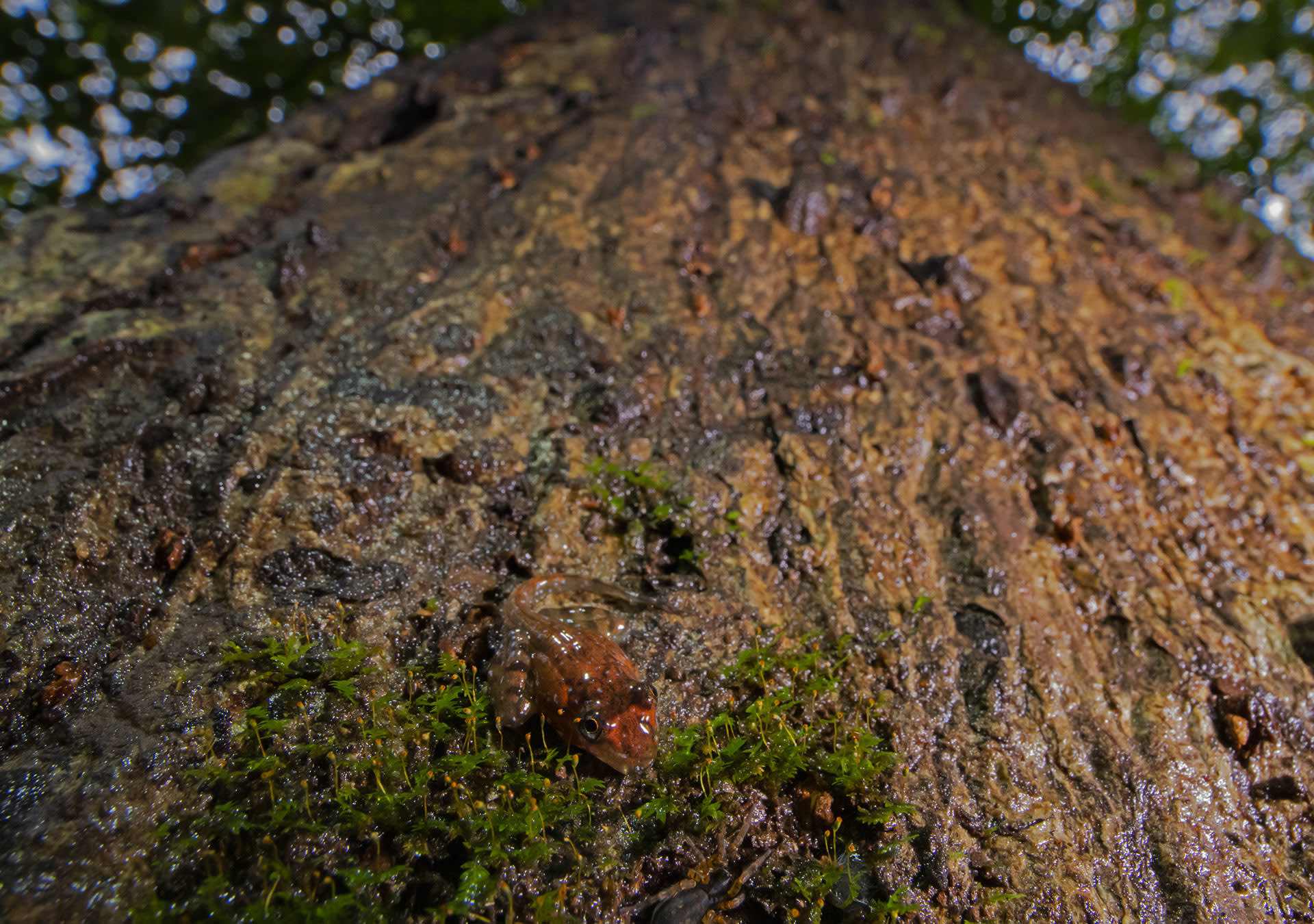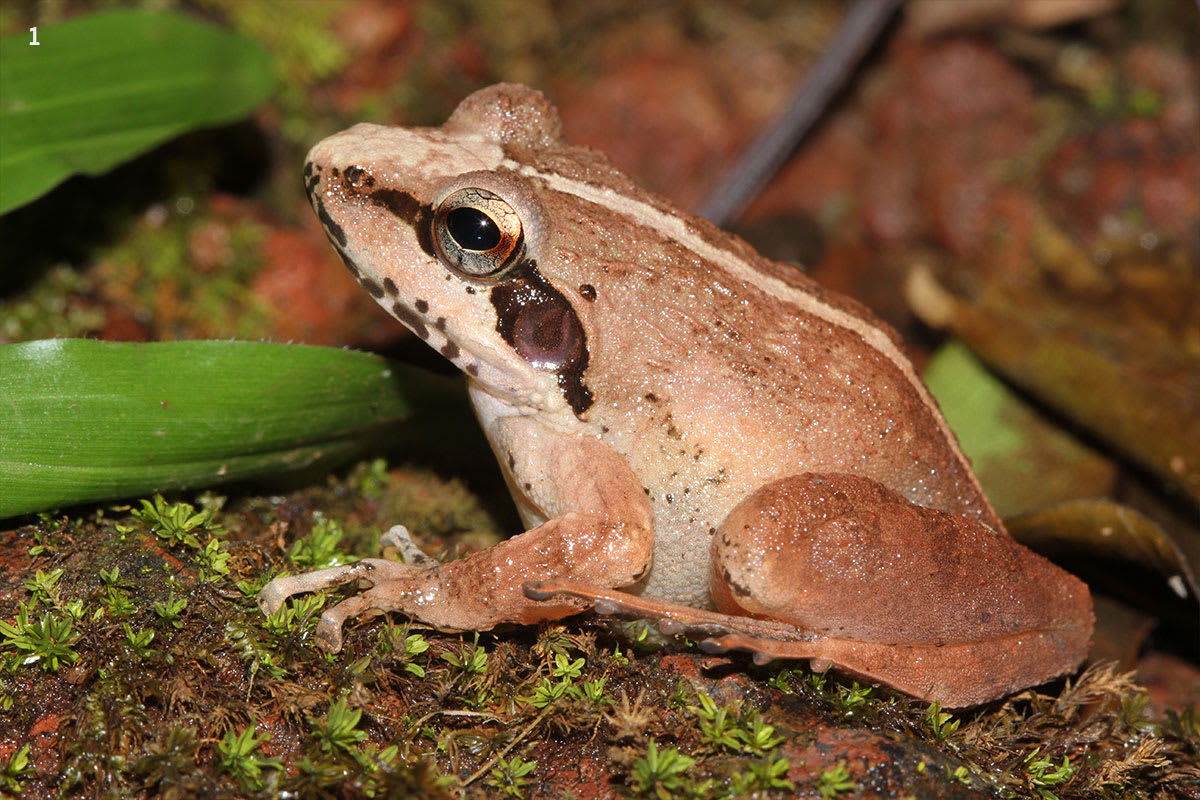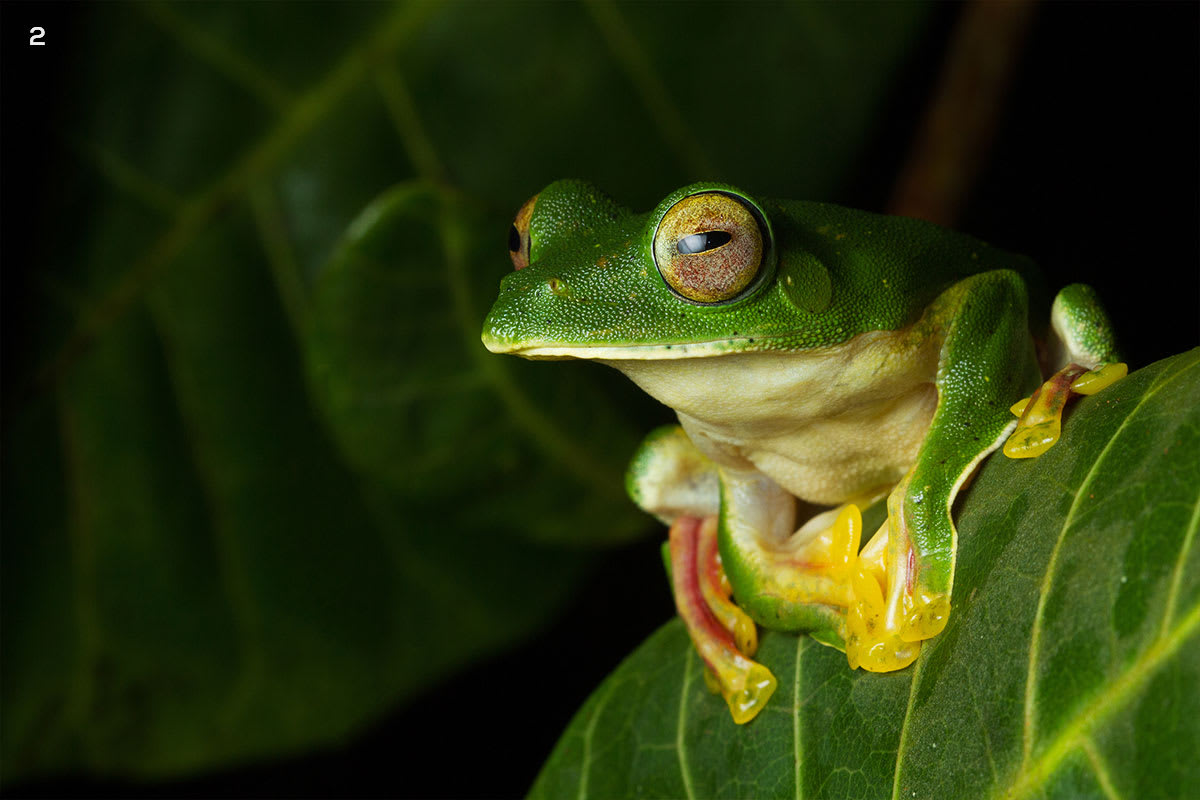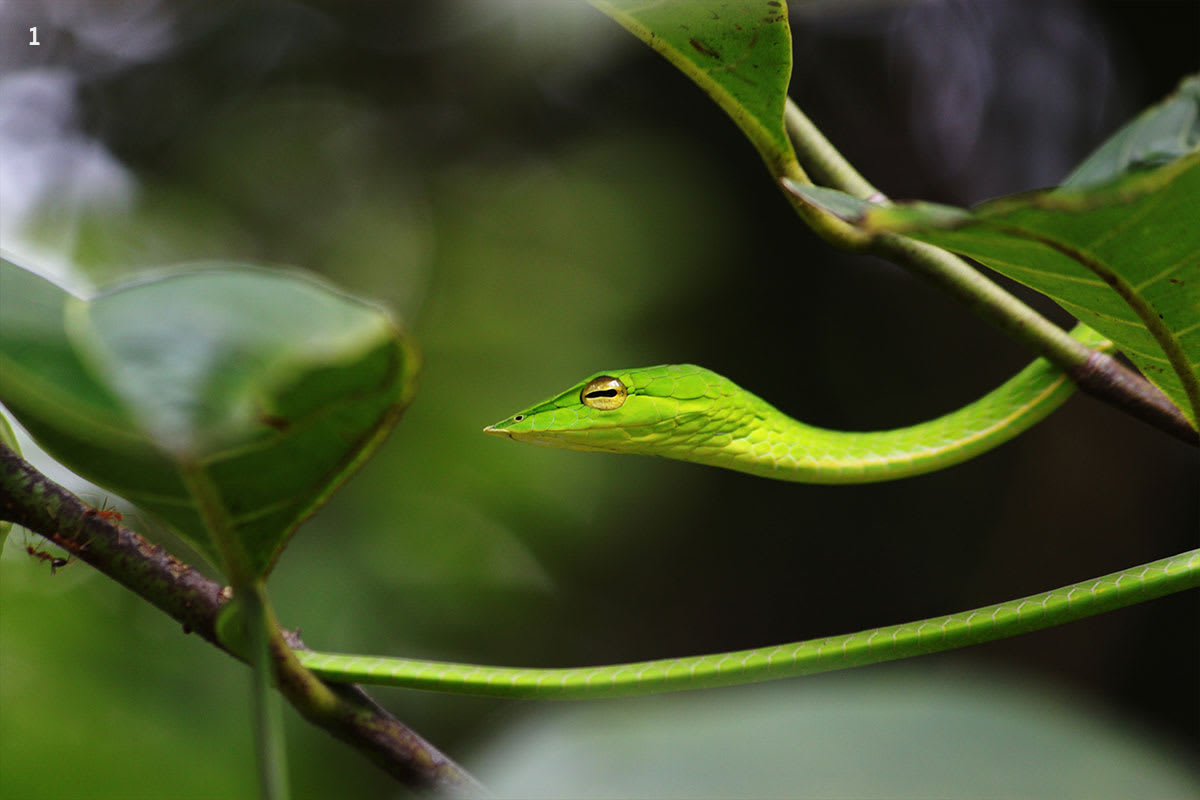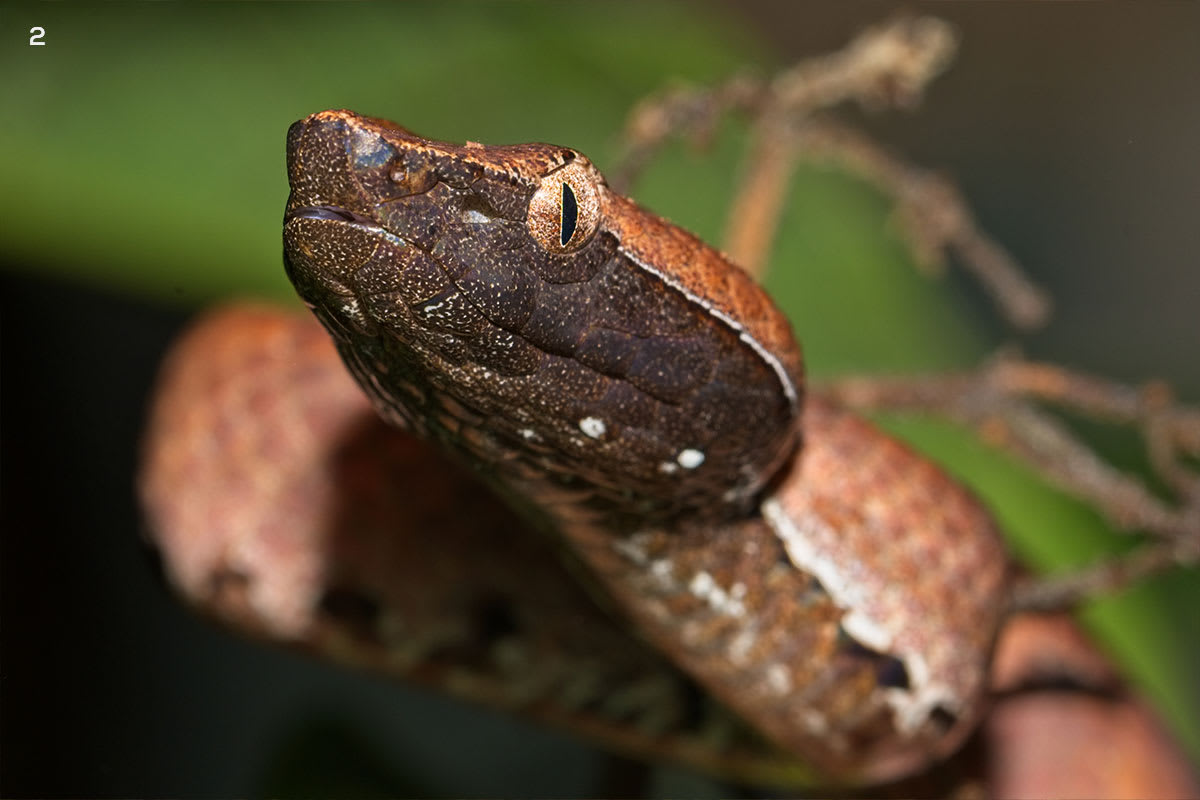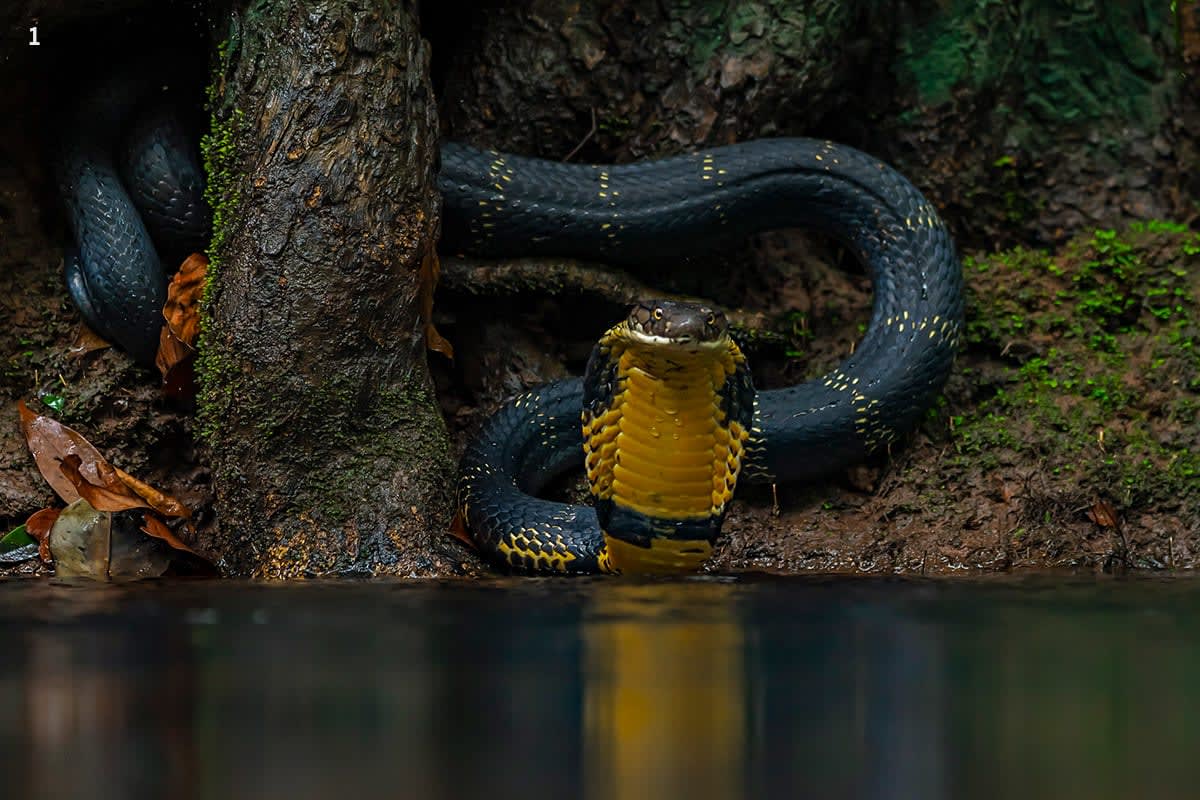 Listen to this article
•
15:34 min
Listen to this article
•
15:34 min
When the monsoon rolls into Amboli, so do the moss and mist. Cloaks of green and white envelop everything. Buildings, trees, and even the streets are obscured from vision, so you feel like you’re perpetually swimming in the clouds. The mist only clears when the rain comes. A downpour so intense, you wonder how anything can withstand the lashing. Homes are wrapped in tarp and plastic. Roads wash away frequently. But it is the smallest of creatures — like the fingernail-sized frogs and cicadas — that celebrate this torrent with shrill, loud songs that carry over the din of the rain.
Here in the Western Ghats, the monsoon arrives with aplomb, injecting new vigour into the forests, waterfalls, and streams that spring from the hills. Led by naturalist Omkar Dharwadkar, I spend 10 days in September charting a course through the Western Ghats of Maharashtra and Goa, starting with Amboli in the north and moving southwards to Cotigao on the Goa-Karnataka border. Whether a gurgle or a gush, the sound of water remains a constant throughout our journey.
While most large mammals, including humans, seek shelter during such times, many reptiles and amphibians eagerly await the arrival of the monsoon. For many of these creatures, the rains signal the mating and breeding season. Cacophonous mating calls of frogs fill the air. Unique courtship behaviours are on display. Various stages of the reproductive cycle play out in front of your eyes. From shiny frog egg clutches to tadpoles to froglets, the watery wilderness is abuzz with micro life.
Flora takes its turn as well. Seasonal orchids spring from tree trunks and the ground. More than 100 species of orchids are endemic to the Western Ghats (i.e. they are found only in that area and nowhere else). Tiny monsoon wildflowers carpet the laterite plateaus: yellow utricularia, purple neanotis, and round, white eriocaulon. Fungi of various colours, shapes, and forms overtake the forests.
The Western Ghats are among the most biodiverse habitats in the world, and many of the region’s smaller endemic and key species — both flora and fauna — are only visible in the monsoon. Well outside the boundaries of protected areas, these creatures dwell in proximity to human life, by busy roads and in children’s parks.

Amboli
In Amboli, where there are no protected areas, spotting Malabar pit vipers casually hanging out by the side of a road is fairly common. Not once or twice, but four times over the course of a night and two days, did the two most defining snakes of Amboli make appearances — the green vine snake and the Malabar pit viper. Both in characteristic shades of green, blending perfectly with the dense foliage in which they reside, both were positioned quietly, calmly, just off a thoroughfare within arm’s reach of whizzing cars.
The Malabar pit viper is the most valuable player in these parts. It draws scores of wildlife enthusiasts and their cameras into wet monsoon nights. Undeterred by the pouring rain, the snake sits stoically on low tree branches, the mottled brown patterns on its bright green body camouflaging it so well that it takes me time to spot it, even though it is just a few feet away.
The long, narrow ghat road thrives with life in the monsoon. Purple tree crabs rush in and out of tree hollows. Bull frogs stare at us with fat round eyes. Even the Amboli leaping frog makes an appearance. The Indirana genus of frogs is endemic to the Western Ghats, and the leaping frog (Indirana chiravasi) is named for the habitat in which it is found (chira-vasi translates to an inhabitant of the laterite).
When the sun comes out from behind clouds, we set out on a quest for diurnal dancing frogs. Following their “tak-tak-tak” calls, we hop off the road, down a squelchy mud path to a forest stream, where minuscule dancing frogs perch on wet rocks. They don’t display their characteristic dancing behaviour for us to see. However, we spot the water-dwelling olive forest snake, a reptile that feeds on fish and frogs, before it glides elegantly down the stream. Inspecting the wet undersides of rocks and leaves, we see several tight egg clutches of the wrinkled frog at different stages of development. Inside freshly laid eggs, the dark, round embryos are discernible through translucent egg casings. In others, we can clearly see tadpoles forming inside, some moving slightly. Eventually, they will pop out of their cases and fall into the stream below. Wrinkled frogs are nocturnal, and so we don’t meet the adults that morning.
Netravali
A few days later, in Netravali, on another rainy night beside a roadside stream under a gushing waterfall, we encounter adult wrinkled frogs. They announce themselves with sharp, short krriiks. Sitting stoically in the tiny cracks of rocks as water gushes over them, they allow us a close look at their dazzling black, rhombus-shaped eyes and puckered, prune-like skin.
Encounters like these offer a lesson in looking closer at our surroundings, but for the creatures that inhabit spaces shared with humans, life is not without danger. Further along the road, we come across two hump-nosed pit vipers. One of them has just been run over by a passing vehicle.
Cotigao
In Cotigao, the evenings are deafening. It is nearing the end of the mating season, and the shouty calls of male frogs advertising their presence have reached a crescendo. Ornate narrow-mouthed frogs have big voices, inversely proportional to their minuscule body size. When they call, their bulbous vocal sacs inflate like balloons, while their tiny bodies deflate as air is pushed out, making for a rather bizarre but fascinating sight in the leaf litter. Higher up in the tree canopy, the quick, short calls of Malabar gliding frogs are nearly drowned out by louder, ground-dwelling species. We’re far away from the boundaries of the Cotigao Wildlife Sanctuary, inside the neatly manicured Hatipaul Eco Tourism Complex, but monsoons in the Western Ghats are never quiet. From the ground to the tree canopy, there’s always a multi-level, surround-sound orchestra of creaks and croaks at play.
Photo source (Amboli leaping frog)



